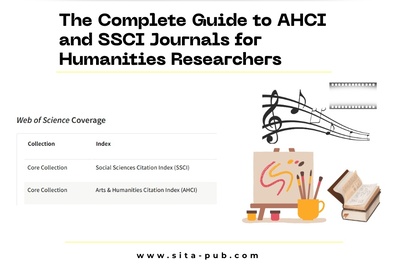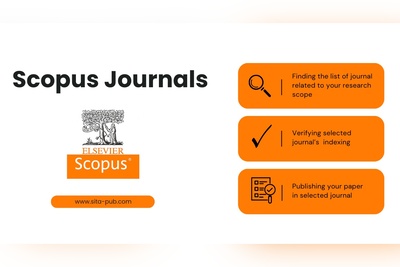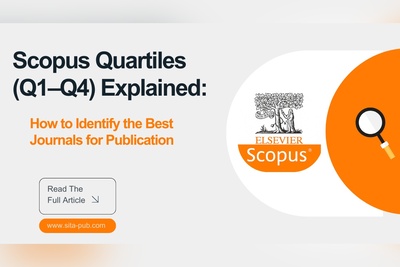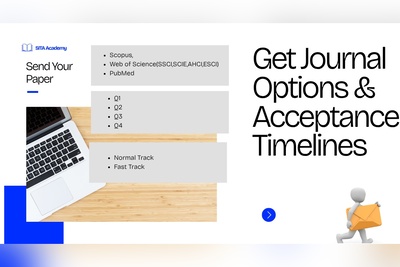Top Journals That Count for Academic Promotion and Tenure: What Faculty Need to Know
Learn the criteria that define top journals for academic promotion and tenure. Understand indexing, quartiles, impact metrics, and how SITA Academy helps faculty publish successfully.
- Understanding Promotion and Tenure Requirements Through Research Publications
- Top Journals for Promotion: What Really Defines a “Top” Journal?
- Are Q3 and Q4 Journals Valuable for Promotion and Tenure?
- Research Paper Publication for Academic Promotion and Tenure
- How SITA Academy Helps Faculty Publish in Journals That Count for Promotion

Academic promotion and tenure decisions depend heavily on the quality, visibility, and impact of your research publications. While many faculty members think they must publish in specific journals, the truth is that institutions do not rely on a universal list. Instead, they evaluate whether your publications meet certain recognized criteria that indicate strong scholarly contribution.
In this article, we explain the key journal criteria for academic advancement, what faculty must know to meet promotion requirements, and how SITA Academy supports researchers in preparing, matching, and publishing papers that count.
Understanding Promotion and Tenure Requirements Through Research Publications
Most universities use a combination of research, teaching, and service to evaluate faculty members. However, research publications remain the central pillar—especially for research-intensive institutions.

Although every institution has its own standards, most share these common expectations:
1. Publications in Indexed and Recognized Journals
To be considered for promotion:
Journals must be indexed (Scopus, Web of Science, PubMed, or specialty indexes).
Journals must follow peer-review processes.
Predatory or low-credibility journals are not accepted.
Indexing is often the first filter universities use to validate research quality.
2. Publications in Journals With Strong Metrics
Institutions often look at:
Quartile (Q1–Q4) within subject categories
Impact Factor, CiteScore, or SJR ranking
Reputation within the discipline
While Q1 and Q2 journals are preferred, many universities also accept Q3 and reputable Q4 journals, especially in applied fields or emerging research areas.
3. Publications Relevant to Your Field and Specialization
Promotion committees want to see:
A clear research trajectory
Consistent contributions within a defined expertise
Publications aligned with your discipline
Publishing outside your field may not count as strongly, even if the journal is high-ranked.
4. A Minimum Number of Publications
Requirements vary, but many universities expect:
2–6 publications for promotion to Assistant or Associate Professor
Additional publications for full professorship
A mix of sole-authored and collaborative works
Some institutions accept conference papers, reviews, and book chapters—others only count journal article
5. Contribution and Authorship Role
Committees review:
Corresponding authorship
First or last author roles
Contribution statements
These indicate your level of involvement and leadership in the research.
6. Ethical and Methodological Rigor
The paper must demonstrate:
Strong methodology
Ethical approval where required
Transparent data analysis
Accurate reporting and no duplication
Quality of writing and presentation also plays a major role.
Top Journals for Promotion: What Really Defines a “Top” Journal?
Instead of memorizing journal names, faculty should understand the criteria that make journals count toward promotion and tenure. Universities assess journals based on recognized standards rather than on any fixed list.

Below are the criteria that define a top journal in the context of academic promotion:
1. Indexing in a Trusted Database
A journal that counts for promotion must be indexed in well-known scholarly databases such as:
Scopus
Web of Science (SCI, ESCI, SSCI)
PubMed / MEDLINE
Discipline-specific academic indexes
Indexing ensures:
Peer-review legitimacy
Quality control
Long-term citation tracking
If a journal is not indexed, it rarely contributes toward promotion.
2. Strong Quartile Ranking (Q1–Q2 in Most Cases)
While quartile is not the only factor, Q1 and Q2 journals are generally considered top-tier.
They reflect:
Higher citation performance
Stronger editorial standards
Greater visibility and academic rigor
Some institutions accept Q3 journals as long as the research is of high quality and fits the field.
3. Reliable Impact Metrics
Evaluation committees look at:
Impact Factor (IF)
CiteScore
SJR
H-index of the journal
Higher values indicate influence, but committees also consider subject variations—some fields naturally have lower metrics.
4. Prestigious Publishers or Academic Societies
Journals published by reputable organizations carry more weight, such as:
International academic societies
Well-known publishing houses
Long-standing journals with established reputations
Quality and longevity matter more than flashy metrics.
5. Clear Peer-Review and Editorial Transparency
Top journals must demonstrate:
Double-blind peer review
Clear editorial policies
Ethical guidelines
No predatory publishing characteristics
Transparency in processes increases trust and credibility.
6. Alignment With Your Academic Discipline
A top journal for promotion is not necessarily the one with the highest impact factor—it's the one that:
Fits your specialization
Publishes research similar to yours
Is recognized by your academic department
A perfectly matched journal can be more valuable than a higher-ranked journal outside your field.
Are Q3 and Q4 Journals Valuable for Promotion and Tenure?
Many faculty worry that only Q1 journals count, but this is not accurate.
Several institutions consider Q3 or Q4 publications acceptable when:
The journal is indexed and legitimate
The article aligns with your field
You have multiple publications showing consistent contribution
The requirements of your rank are met
For early-career researchers or faculty with tight deadlines, Q3 and Q4 journals may provide:
Faster review
Higher acceptance rates
More flexibility in manuscript scope
They remain a valuable part of a strong academic portfolio.

Research Paper Publication for Academic Promotion and Tenure
To meet promotion requirements, researchers must ensure that their papers:
Address relevant research gaps
Follow rigorous methodology
Are well-written and polished
Match the target journal precisely
Follow the required formatting and referencing guidelines
Avoid ethical issues such as plagiarism or poor reporting
These steps significantly increase acceptance chances and reduce rejection for technical reasons.
How SITA Academy Helps Faculty Publish in Journals That Count for Promotion
At SITA Academy, we specialize in supporting faculty members with publication requirements for promotion, tenure, and academic evaluation.
Our services include:

1. Full Manuscript Review and Improvement
Language editing
Academic writing enhancement
Structural improvement
Plagiarism check and reduction
2. Journal Matching for Promotion Purposes
We evaluate your manuscript and:
Recommend the most suitable journals (Q1–Q4)
Consider acceptance rate, publication speed, and indexing
Ensure journals meet your institution’s promotion criteria
3. Formatting and Journal Compliance
We format your paper based on:
Author guidelines
Reference style
Figures and tables requirements
Margin, font, and layout standards
4. Submission Support
Preparing submission files
Cover letter writing
Handling reviewers' structural comments
Guiding the process until acceptance
5. Clear Communication and Transparency
We share:
Journal options
Expected costs
Acceptance timeline
All editorial communications
You remain fully informed from start to finish.
Final Thoughts
Choosing the right journal for academic promotion and tenure is not about searching for a universal list—it’s about understanding the criteria that define journal quality and suitability.
Top journals are those that:
Are indexed
Have reputable metrics
Match your field
Follow strong peer-review processes
Align with your academic goals
Verified Contact Channels
If you have any questions, inquiries, or would like to learn more about our services, please don't hesitate to reach out to us. Our dedicated team is ready to assist you.













